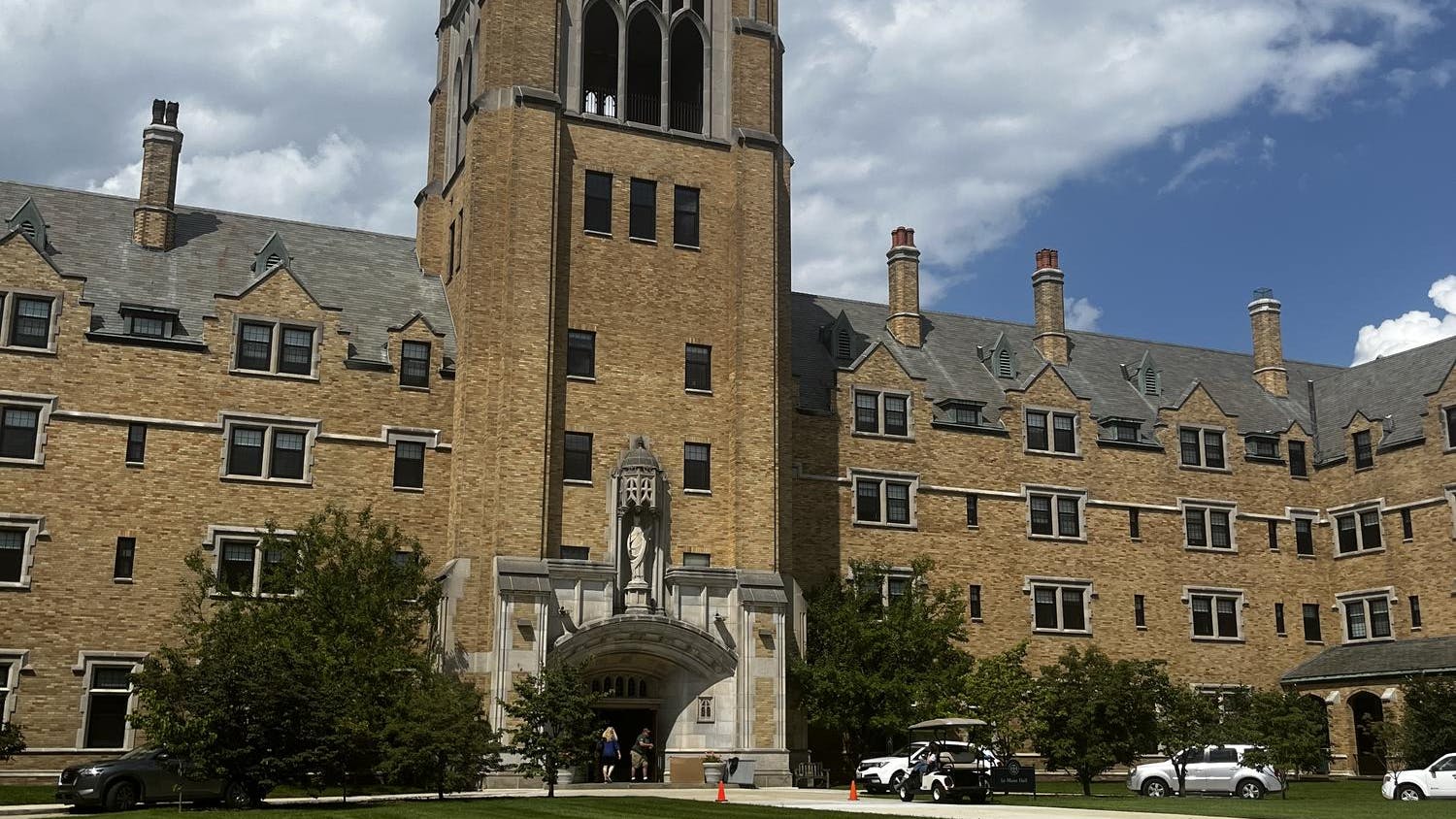Positioned on the edge of St. Mary's lake, the Log Chapel at Notre Dame stands as a physical landmark of the University's storied history.

The location serves as the gravesite for the first priests to serve the South Bend community and represents the long commitment of Notre Dame to the people of this area, Fr. Peter Rocca, rector of the Basilica of the Sacred Heart, said.
"[The Log Chapel cemetery] is filled with people who have just given themselves to this place and really believed in the mission of Notre Dame," Rocca said.
Today, the Log Chapel is frequently used for weddings, baptisms, Masses, morning and afternoon prayer by the Old College seminarians, and other small gatherings, Rocca said.
"It's a small place. We have a number of bigger chapels on campus," he said. "But if you want something more intimate, then this is the perfect place for it. It is filled with history."
Rocca said Jesuits set up St. Joseph's Mission in the South Bend area, but in the wake of the French and Indian War, the British forced all of the priests out of the area. As a result, the Mission lacked a resident priest from the late 1750s until around 1830.
Fr. Stephen Badin, the first Catholic priest to be ordained in the United States, eventually took over the Mission, Rocca said. Badin built the chapel in the 1830s, after the United States government forced the Potawatomi Native Americans out of the area.

"At this mission, St. Joseph's Mission, the government had decreed that all Native Americans would have to have a forced migration from this area all the way west of the Mississippi River," Rocca said.
Rocca said once the Native Americans were forced out, all the land in the area where St. Joseph's Mission was located came under government authority. Badin bought some of the land in order to maintain the Mission's independence.
"So, in order to have some authority and have some land that the government did not own, Fr. Badin ended up buying about 650 acres here," Rocca said.
Badin built the original log chapel within those 650 acres, Rocca said. In November 1842, Fr. Edward Sorin arrived in South Bend and took up residence in the log chapel.
"That was the first chapel and residence," Rocca said. "So then, soon after that, Fr. Sorin and the [Holy Cross] brothers built the Old College building."
Rocca said before Sorin arrived, Badin and his colleagues worked hard to aid the Catholic population of South Bend. But it was Sorin whose vision for a University led to the founding of Notre Dame.
"Fr. Sorin's principle aim in coming here was to start a college," Rocca said.
The original log chapel fell into disuse in 1848 and then burned to the ground in 1856, Rocca said. It was not until 1906 that a replica of the original chapel was constructed.
"There are four people buried in the Log Chapel," Rocca said. "Fr. Badin is buried there. He died around the year 1853, and he was buried for 50 years in Cincinnati, Ohio. But his dream, his wish, was always to be buried under the shadow of the Golden Dome. So, after 50 years, his body was exhumed and brought back here."
Three of Badin's successors are also buried in the Log Chapel: Fr. Louis Deseille, Fr. Benjamin Petit and Fr. François Cointet, Rocca said. Deseille and Petit were Jesuits, while Cointet was a Holy Cross priest.
Rocca said when the government forced the Potawatomi out of the area, Petit accompanied the Indians on their forced migration, which has since been referred to as the "Trail of Tears." Petit got sick when he returned from the infamous march and died at the age of 29.
Rocca said the legends of these men and their everlasting presence in the Log Chapel heighten the site's significance for him.
"For me, it is very moving to be able to celebrate in a place where you have buried right in the middle aisle - I mean, they're right there where you can't miss them - the person who really started this place and then his successors, including a Holy Cross priest, who helped continue it." Rocca said. "And to see what it has grown into today, I mean, it's pretty awesome. Its overwhelming."












